
Mother of Gardens
When the early 20th-century plant hunter Ernest H. Wilson
published a book on his collecting expeditions in China, he
titled it "Mother of Gardens." China earned this epithet for
good reason: the country is home to some 31,000 native plant
species, a third more than the U.S. and Canada combined, and
many of these species are endemic to China. Yet a vast number
of Chinese species could be adopted in North America and
Europe because the regions share similar climates. Gardens
throughout the world today are graced with flowering
plants—rhododendrons, forsythias, magnolias, camellias,
primroses, viburnums, and many others—that originated in
China. In this slide show, glimpse just a tiny sampling of
some of the most stunning transplants.—Susan K. Lewis
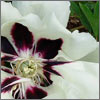

|
|
ROCK'S PEONY
Paeonia rockii
While this particular species of tree peony was
named for the Austrian-American botanist Joseph Rock,
who found it in the mountains of western China in the
mid-20th century, Chinese gardeners have cultivated
peonies since at least the seventh century A.D. Many of
the most beloved, double-flowered tree and herbaceous
peonies of today originated long ago in Chinese
nurseries. The genus Paeonia is not exclusive to
China (some peony species are native to western North
America and southern Europe), but China's native species
and horticultural traditions have vastly enriched
Western gardens.
|
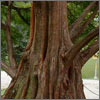

|
|
DAWN REDWOOD
Metasequoia glyptostroboides
This prized redwood has been called a "living fossil"
and is a testament to why China's flora is so diverse.
Like many other plants in China, this species survived
the last Ice Age, when glaciation wiped out similar
flora in North America and Europe. Until 1948, the genus
Metasequoia was known only from the fossil
record, but a small stand of trees discovered in the
Sichuan-Hubei region proved to belong to this ancient
genus. Thanks to seed and saplings collected in China,
the dawn redwood now flourishes in gardens throughout
the world.
|
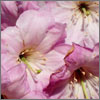

|
|
FORTUNE'S RHODODENDRON
Rhododendron fortunei
Europe has just nine native species of rhododendron;
China has more than 600. When China's floral bounty
became available to Western horticulturists in the
mid-19th century following the end of hostilities
between Britain and China, rhododendrons became highly
sought after because many could survive harsh winters.
The Scottish plant collector Robert Fortune discovered
this species in 1856, growing at 3,000 feet in the
mountains of eastern China. It was the first Chinese
rhododendron introduced to Britain and has spawned
hundreds of cultivated varieties.
|
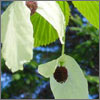

|
|
DOVE TREE
Davidia involucrata
When it blooms in the spring and a breeze rustles the
long white bracts (modified leaves) at the base of its
flowers, it's clear why Davidia involucrata has
the common names "dove tree" and "handkerchief tree." It
is still uncommon and prized in Western gardens, but in
the 19th century it was legendary. Around 1870, French
missionary Armand David brought it to the attention of
Western nurserymen. But it wasn't until the turn of the
century that plant hunters, including Ernest Wilson,
tracked down these trees and shipped seed back from
China.
|


|
|
PRIMULA WILSONII
This tall primrose with whorls of bell-shaped flowers
was the first species named for Wilson. (It is
recognized universally by its scientific name and has no
common name.) Wilson collected it from the high alpine
meadows of the Hengduan Mountains in 1900, during the
first of four expeditions to this rugged region of
southwestern China. Of the roughly 500 known species in
the genus
Primula, which includes many commonly encountered
species in Western gardens, nearly 300 are native to
China.
|
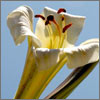

|
|
REGAL LILY
Lilium regale
In grand botanical garden beds and countless humbler
household plots, regal lilies reign supreme. While
ubiquitous today, the regal lily's only natural habitat
is a 30-mile stretch of rocky cliffs in a narrow valley
in the Hengduan Mountains. It is Wilson's most famous
introduction, both for its beauty and for nearly costing
him his life. In 1910 a landslide devastated Wilson's
party as they were collecting hundreds of lily bulbs. A
falling rock shattered Wilson's leg and left him with
what he later nicknamed his "lily limp."
|


|
|
PAPERBARK MAPLE
Acer griseum
The paperbark maple, while not as showy and celebrated
as the regal lily, was one of Wilson's introductions
that the plant hunter himself favored most. Its
trifoliate leaves turn vibrant shades of red and orange
late in the fall, often retaining their color well into
winter. The common name "paperbark" refers to the fact
that the tree's cinnamon-red bark peels away from the
trunk, an ornamental attribute valued by gardeners.
|
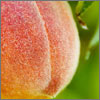

|
|
PEACH TREE
Prunus persica
Thousands of years before Wilson's time, China was
exporting many of its botanical treasures, and the peach
tree is a prime example. Its species name,
persica, springs from the mistaken belief among
European naturalists that the plant was native to
Persia. In fact, botanists now think that peaches were
introduced to the Middle East and Mediterranean regions
along the Silk Road as long ago as 2000 B.C. Other
flowering trees with edible fruits, including oranges,
may have traveled a similar path.
|


|
|
CHINA ROSE
Rosa chinensis
Roses are native to central and southern Europe as well
as Asia and have grown in the gardens of both continents
for more than a thousand years. But rose gardens in the
West are now indebted to roses introduced from China in
the late 18th and 19th centuries, for these roses
carried genes that allowed them to bloom repeatedly
through the summer and into fall. The
Rosa chinensis
"Old Blush" pictured here was one of them. Chinese
gardeners likely created this cultivar centuries before
it reached Europe. Today, thousands of varieties of
repeat-blooming roses owe their parentage to roses from
China.
|
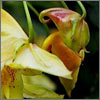

|
|
HARDY IMPATIENS
Impatiens omeiana
This perennial plant illustrates how Chinese flora is
once again contributing to gardens of the world. It was
introduced to the West as recently as 1983, soon after
Deng Xiaoping opened China to Western travel. American
ecologist Don Jacobs collected seed from impatiens
growing wild in the cloud forests of Mount Omei in
Sichuan Province. It was named omeiana after the
mountain, a sacred site of pilgrimage for Buddhists and
a mecca for botanists. Wilson journeyed to the mountain
in 1903 and marveled at its biodiversity. Visitors today
can experience the same wonder Wilson did a century ago.
|
|


We recommend you visit the
interactive version. The text to the left is provided for printing purposes.
|












